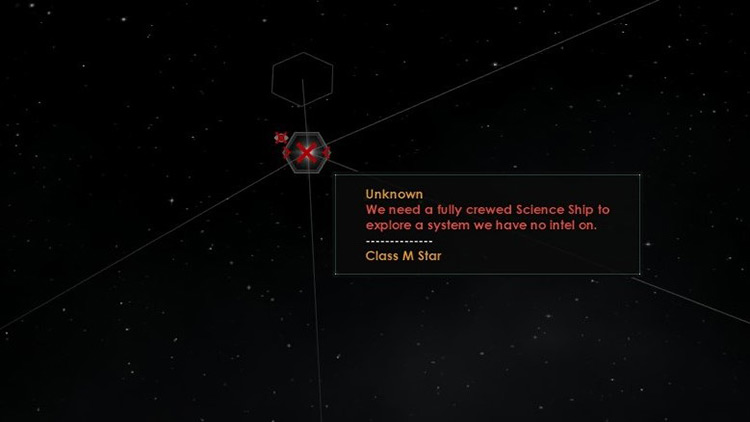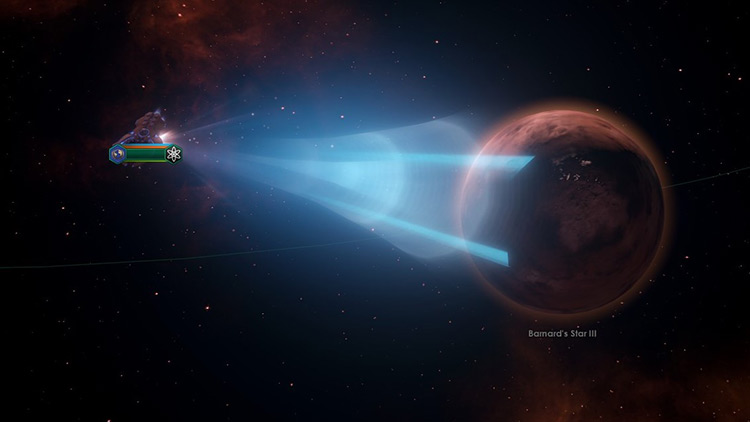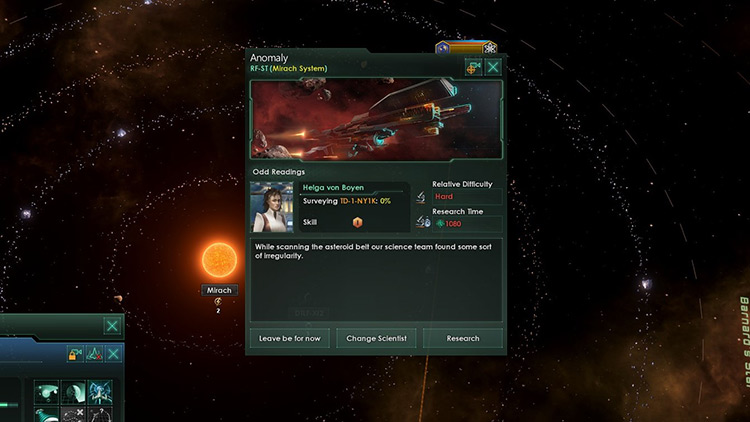Exploring a star system simply unlocks it for travel, both for military ships and non-science civilian ships. Surveying a system shows you what resources are in that star system, plus it allows future annexation, and even gives you a chance to trigger anomalies. These features are readily available at the start of your game, including at least one science ship that you will need to execute these actions.
How To Explore a Star System in Stellaris
You will need a science ship to explore an unknown star system. To do this: Note: If the unknown system is a few hyperlane jumps away, your science ship will automatically explore all other unknown systems along the way, including their hyperlane routes. Once your target star has been explored, your military ships can freely travel to and from it.
How To Survey a System in Stellaris
Surveying a star system follows the same steps as exploring them: Depending on how many objects of interest are in that star system, including the star itself, surveys can take a few seconds to a few minutes to finish at fastest speed. Note: You can speed things up by having two science ships or more surveying the same star system. Once a star system is fully surveyed, the star’s name on the galaxy map will turn from gray to white. Also, you can now use your construction ship to build a space station there and add that star to your territory. If the star system was originally unexplored, then it automatically becomes accessible the moment your science ship enters it. No need to select “Explore system” beforehand. Your military ships can then travel to that star system and protect your science ship while it is still surveying. Note: Star systems that you get from other empires (through trade, war, or annexation) become fully surveyed the moment you get them.
Anomalies in Stellaris
While surveying a system, there is a chance for your science ship to discover an anomaly. Anomalies are special events that, when fully researched, offer permanent bonuses to the celestial body you were just exploring. These bonuses can take the form of:
Minerals, energy credits, or strategic resources, which you can have access to once you build a mining station or research station on the planet Bonuses to technology research Ancient Ships that automatically form a new fleet if they are military Personnel Primitive civilizations that you can eventually uplift into a space empire Unique events. Once completed, these event chains reward you with powerful ancient artifacts, or huge resource bonuses.
Researching an anomaly can take anywhere from 20 to more than 5,000 in-game days, depending on your scientist’s experience level.
When To Explore & When To Survey
Because you automatically “explore” a system when you survey it anyway, you might be wondering what the point of exploration is. Exploration still has its uses, namely if you want to lock down an area, like a choke point, that is far from your borders as fast as possible.
When To Explore:
If you want fleet access to a star system quickly If you want to find other civilizations early on If you are looking for specific routes to reach a certain star as fast as possible If you want to maintain intel on a star system that is outside your borders
When To Survey:
If you want to find anomalies to research If you’re planning on annexing an unclaimed star system, it needs to be fully surveyed first If you want to know whether a star system is even worth annexing or not. Surveying lets you know what resources that star has.
Learning how to balance between exploration and survey can make or break your early game in Stellaris — and set you up for success before the mid-game crisis event.



